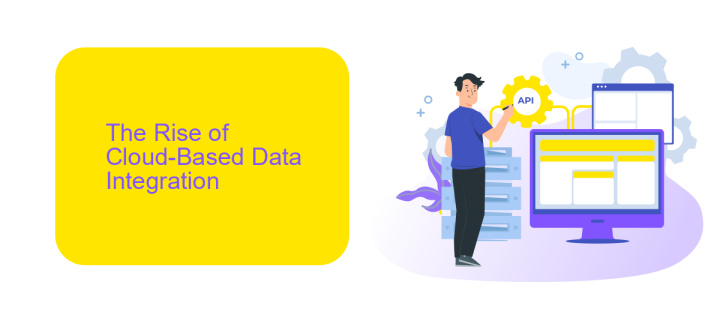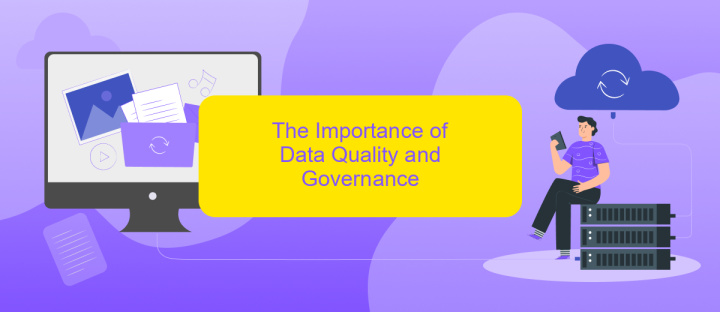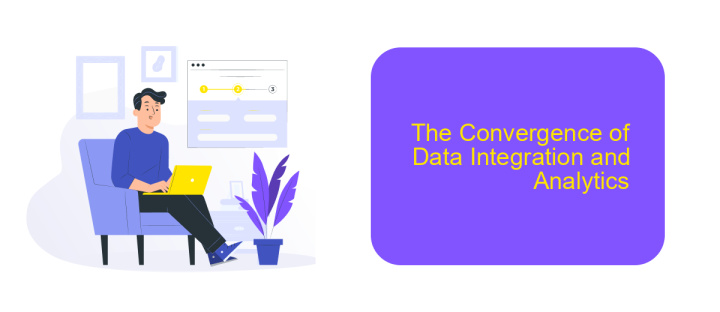Data Integration Trends
In today's data-driven world, seamless data integration has become a cornerstone for businesses aiming to leverage their information assets effectively. As organizations increasingly rely on diverse data sources, staying abreast of the latest data integration trends is crucial. This article explores emerging technologies, best practices, and innovative approaches shaping the future of data integration, ensuring organizations remain competitive and agile in an ever-evolving landscape.
Data Integration Trends: The Future of Data Management
Data integration is rapidly evolving, driven by the need for seamless data flow across various platforms and systems. As organizations continue to amass vast amounts of data, the demand for efficient data management solutions is growing exponentially. The future of data integration will likely be shaped by several key trends.
- AI and Machine Learning: These technologies will play a crucial role in automating data integration processes, improving accuracy, and reducing manual intervention.
- Real-Time Data Processing: The ability to process data in real-time will become increasingly important, enabling businesses to make faster, data-driven decisions.
- API-Driven Integrations: Services like ApiX-Drive are simplifying the integration process, allowing for seamless connectivity between diverse applications and systems.
- Data Privacy and Security: As data breaches become more common, robust security measures and compliance with data protection regulations will be paramount.
- Cloud Integration: With the growing adoption of cloud services, integrating data across cloud platforms will be essential for operational efficiency.
In conclusion, the future of data integration is poised to be more automated, secure, and efficient. Leveraging advanced technologies and services like ApiX-Drive will be crucial for organizations aiming to stay ahead in the data-driven landscape. As these trends continue to develop, businesses must adapt to maintain a competitive edge.
The Rise of Cloud-Based Data Integration

The adoption of cloud-based data integration has seen a significant rise in recent years, driven by the need for businesses to manage and utilize vast amounts of data efficiently. Cloud-based solutions offer scalability, flexibility, and cost-efficiency, making them an attractive option for organizations of all sizes. These solutions enable seamless integration of data from various sources, such as on-premises systems, cloud applications, and third-party services, facilitating real-time data access and decision-making.
One notable service in this domain is ApiX-Drive, which simplifies the process of setting up integrations between different platforms. ApiX-Drive allows users to automate workflows and synchronize data without needing extensive technical expertise. By leveraging such cloud-based integration tools, businesses can enhance their data management capabilities, improve operational efficiency, and gain deeper insights into their operations. As the demand for real-time data integration continues to grow, cloud-based solutions like ApiX-Drive will play an increasingly crucial role in the digital transformation journey of organizations.
The Importance of Data Quality and Governance

Data quality and governance are critical aspects of any data integration strategy. High-quality data ensures that businesses can make informed decisions, while proper governance guarantees that data is managed responsibly and securely. Without these elements, the value of integrated data diminishes, leading to potential inaccuracies and compliance issues.
- Accuracy: Ensures that data is correct and reliable.
- Consistency: Maintains uniformity across different data sources.
- Timeliness: Provides up-to-date information for decision-making.
- Compliance: Adheres to regulatory standards and internal policies.
- Security: Protects sensitive information from unauthorized access.
To achieve high data quality and governance, leveraging tools like ApiX-Drive can be beneficial. ApiX-Drive facilitates seamless integration between various data sources, ensuring that data remains accurate and consistent. Additionally, it supports compliance by providing secure data transfer and management capabilities. By prioritizing data quality and governance, businesses can unlock the full potential of their integrated data, leading to better insights and outcomes.
The Convergence of Data Integration and Analytics

The convergence of data integration and analytics is transforming how businesses utilize their data. By merging these two processes, organizations can seamlessly collect, process, and analyze data in real-time, leading to more informed decision-making and strategic insights.
One of the key drivers behind this trend is the need for timely and accurate information. Traditional data integration methods often involve significant delays, but modern solutions are breaking down these barriers, allowing for instant data access and analysis. This shift is crucial for maintaining a competitive edge in today’s fast-paced market.
- Enhanced real-time data processing
- Improved data accuracy and consistency
- Streamlined decision-making processes
- Increased operational efficiency
Services like ApiX-Drive exemplify this trend by providing robust tools for automating data integration. By connecting various applications and enabling seamless data transfer, ApiX-Drive helps businesses optimize their workflows and ensure that their data analytics are always up-to-date. This integration ultimately supports better business outcomes and a more agile response to market changes.


The Evolution of Data Integration Tools and Technologies
Over the past few decades, data integration tools and technologies have undergone significant evolution. Initially, data integration was a manual process, requiring extensive coding and customization. Early tools were rudimentary, focusing primarily on Extract, Transform, Load (ETL) processes. As the volume and variety of data increased, the need for more sophisticated solutions became evident, leading to the development of more advanced ETL tools that could handle complex data transformations and integrations.
In recent years, the rise of cloud computing and big data has further revolutionized data integration. Modern tools now offer real-time data processing, seamless integration with various data sources, and user-friendly interfaces. Services like ApiX-Drive have emerged, providing automated data integration solutions that require minimal technical expertise. These platforms enable businesses to connect disparate systems effortlessly, ensuring data consistency and accessibility across the organization. As technology continues to advance, we can expect data integration tools to become even more intuitive and powerful, further simplifying the process of managing and utilizing data.
FAQ
What is data integration and why is it important?
What are the current trends in data integration?
How can businesses ensure data quality during integration?
What are some common challenges in data integration?
How can automation tools help in data integration?
Apix-Drive is a simple and efficient system connector that will help you automate routine tasks and optimize business processes. You can save time and money, direct these resources to more important purposes. Test ApiX-Drive and make sure that this tool will relieve your employees and after 5 minutes of settings your business will start working faster.

